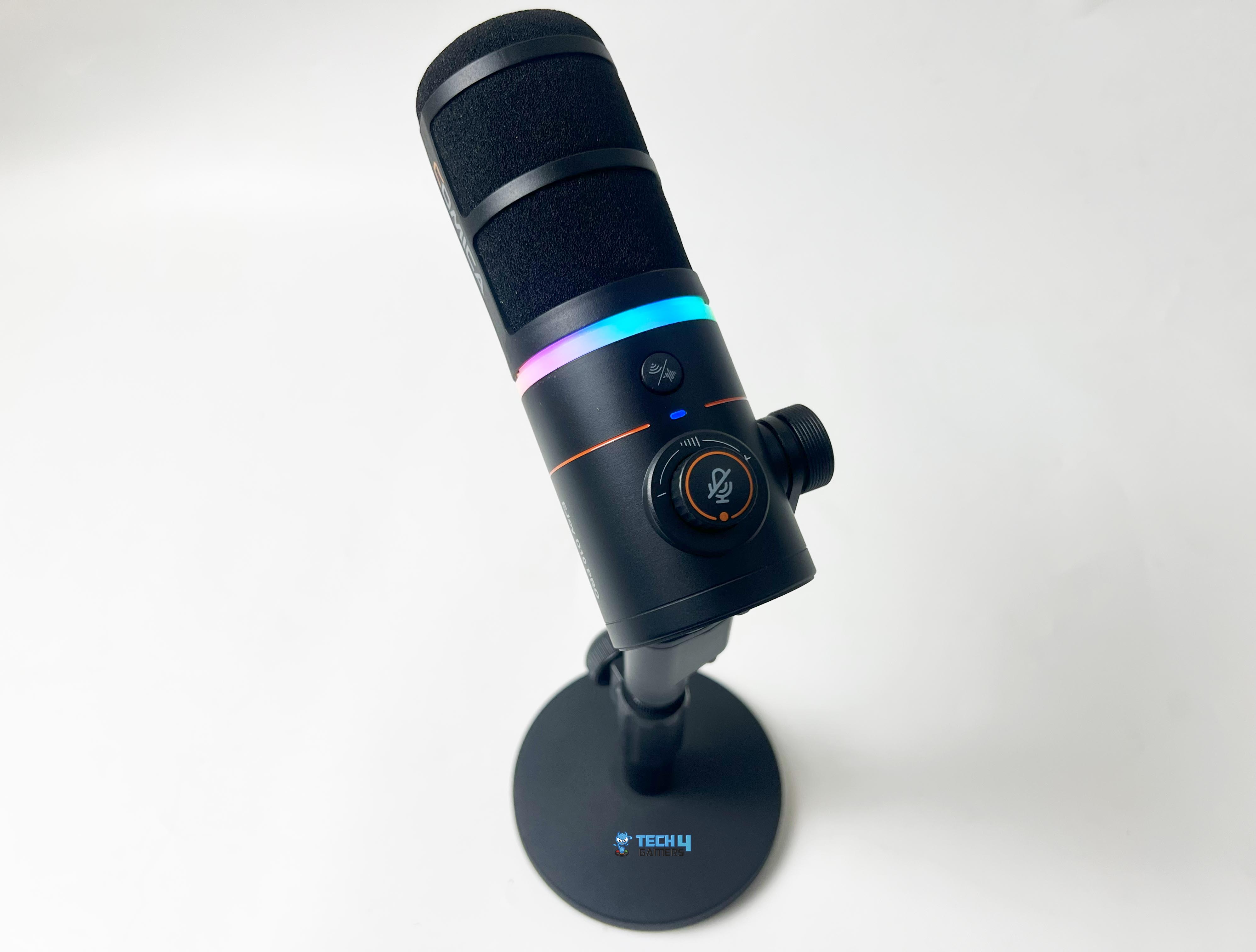A Good Option!
Review Summary
Epomaker’s Click Lite is a lightweight wireless mouse that keeps things simple. It comes in at about 75g, which makes it easy to flick around without feeling bulky. You get both 2.4GHz and Bluetooth for connectivity, and in my testing, both worked fine without any issues. The sensor tracks smoothly, clicks feel responsive, and it does the job whether you’re gaming or just browsing. It doesn’t bother with RGB or fancy extras, but that also keeps the weight down and the battery lasting longer. For the price, it’s a straightforward, reliable option.
Hours Tested: 1 Week
Overall
-
Design - 8/10
8/10
-
Build Quality - 8/10
8/10
-
Performance - 8.5/10
8.5/10
-
Value - 9/10
9/10
-
Comfort - 8.5/10
8.5/10
Pros
- Affordable price point
- Lightweight
- Comfortable shape
- Three connectivity options
- Responsive click feel
Cons
- Plasticky shell feel
- Sensor is mid-range
- Software is basic
- No RGB lighting
- DPI buttons can’t be remapped
When you think of Epomaker, their keyboards probably come to mind first. They’ve built a solid reputation in the enthusiast space by offering feature-packed keyboards at great prices. I’ll be real, when I first heard they were releasing a gaming mouse, I thought, Really? This space is already packed with names like Logitech, Razer, and Glorious, so it caught me off guard.
I wondered if a company known for keyboards could really compete here. What makes this mouse stand out isn’t only the price, though that helps a lot. Still, Epomaker making a gaming mouse feels a bit wild, but surprisingly, it holds up well against brands that have been at this for ages.
Key Takeaways
- The Epomaker Click Lite is a lightweight wireless gaming mouse that delivers smooth performance and solid comfort at an affordable price. With its balanced shape, responsive clicks, and dependable battery life, it’s a surprisingly capable option.
- You should consider the Epomaker Click Lite if you want lightweight comfort, need tri-mode connectivity, and are looking for great value.
- You should skip the Epomaker Click Lite if you want a high-end sensor, expect premium build quality, and prefer larger mice.
Here are the technical specifications:
| Material | Plastic |
| Connection | Tri-Modes (2.4Ghz Wireless, Bluetooth, and USB A to C Cable) |
| DPI | 6 stages adjustable at 800, 1600, 2400, 3200, 5000,12000 |
| IPS (Inches per second) | 300 IPS |
| Acceleration | 35g |
| CPI | 24000 |
| FPS | 12000 |
| Sensor | PAW3311 |
| Polling Rate & Report Rate (in 2.4G or USB Mode) | Default 1000Hz (4 stage adjustable at 125hz, 250hz, 500hz, 1000hz) |
| Polling Rate/Report Rate (in Bluetooth Mode) | 125hz |
| Battery | 500mAh |
| Compatible OS System | Windows/Mac/Linux |
| Size | 12.1×6.36×3.87cm |
| Weight | about 59g |
How is the Epomaker Click Lite Different?
When compared to its predecessor, the original Epomaker Click mouse, the Click Lite retains the same solid design principles in a lighter, leaner form, but trades out the flagship PAW3950 sensor and 8K wired polling for a more modest PAW3311 and up to 1,000Hz wireless polling. When set alongside competitors at the same price point, the Click Lite stands out by delivering tri-mode flexibility, a lightweight build, and dependable wireless performance. These are features that are often found in more expensive mice.
Packaging & Unboxing
Epomaker kept things simple with the Click Lite’s packaging. It leans more toward minimalism rather than trying to look premium or flashy. The mouse comes in a dual-color box, with a picture of the Click Lite on the front and rows of icons highlighting its main features, like wireless connectivity, sensor, adjustable DPI, and polling rate. The branding is subtle, which I actually like. Inside, everything is neatly arranged, with the mouse taking center stage right on top.
Box Contents
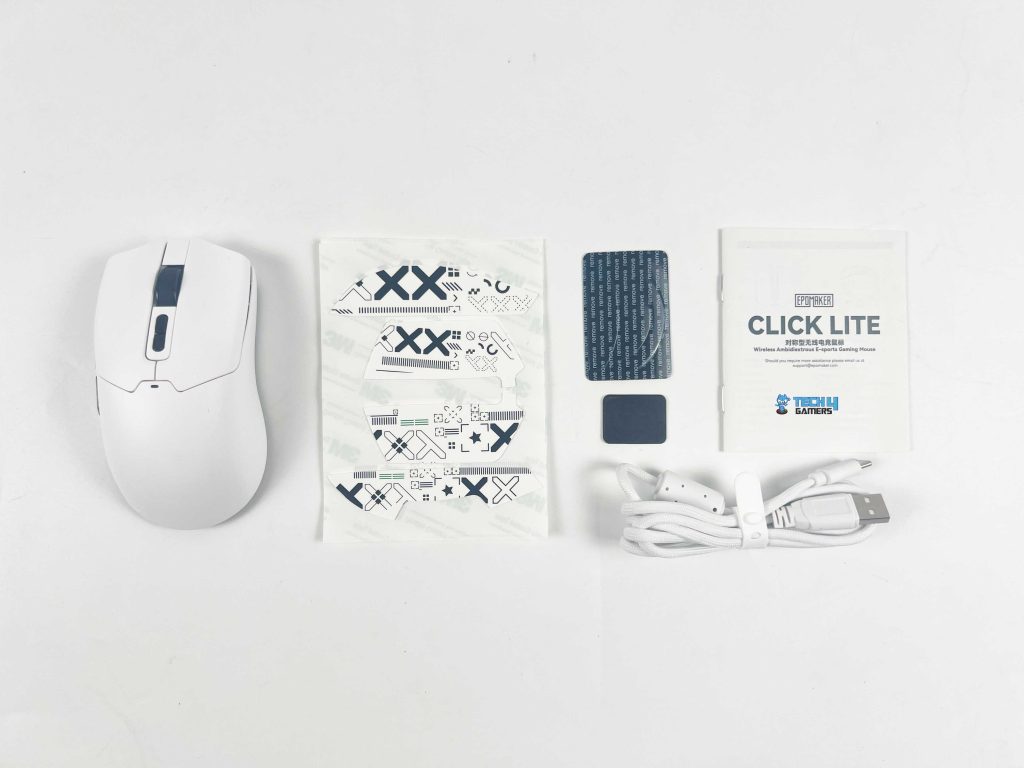
Here is the list of everything that you’ll find inside the box:
- Click Lite Wireless Gaming Mouse
- 2.4ghz Dongle(Stored in the mouse)
- Detachable USB-A to USB-C Cable
- Multilingual User Manual
- Extra PTFE Stickers
Design
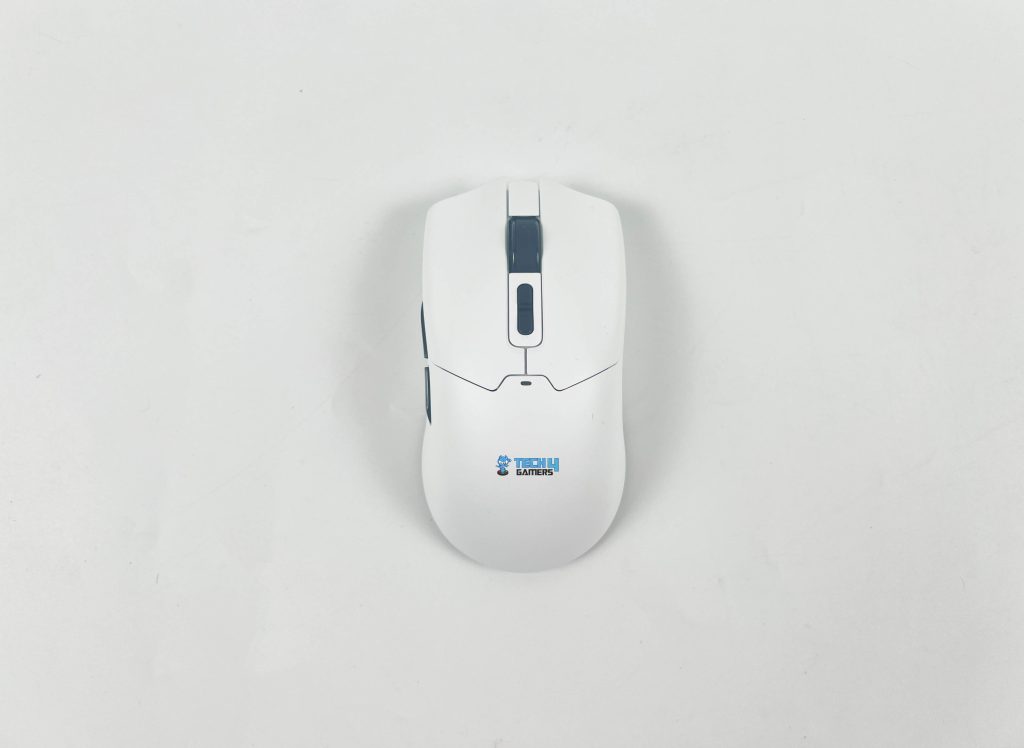
It keeps things simple with a low-profile and old-school vibe. Reminding me of those old Microsoft ones from way back in the 90s, which were super simple and nothing fancy about them. That said, it’s also hard to ignore how closely it resembles modern lightweight options, which borrow the same compact, ambidextrous-friendly shape designed for both fingertip and claw grip users.
The mouse comes in two colorways: black and white variants. Something I noticed right away is that there’s no RGB lighting on this one. For some buyers, that’ll be a missed opportunity. But for others, especially those who prefer a cleaner, distraction-free look like me, the lack of RGB lighting is actually a plus. It also helps keep weight down and prolong battery life.
Grip Styles
The Click Lite feels comfortable for claw and fingertip grip users. Even with my bigger hands, the compact shape still gives enough surface to rest on, so my fingers don’t end up in awkward positions. The hump toward the back of the shell helps anchor your palm to control. The curved sides provide your thumb and fingers with good support, which helps when making small movements, making them particularly handy for aiming in shooters.
For everyday tasks, such as scrolling through documents or using the side buttons, it works well enough. All in all, for a claw grip, it feels natural, allowing the fingers to arch comfortably without requiring excessive overextension. That said, this is not a full ergonomic palm-grip mouse. The shorter body and lower length mean palm users will likely find it lacking in support compared to bulkier designs.
Weight
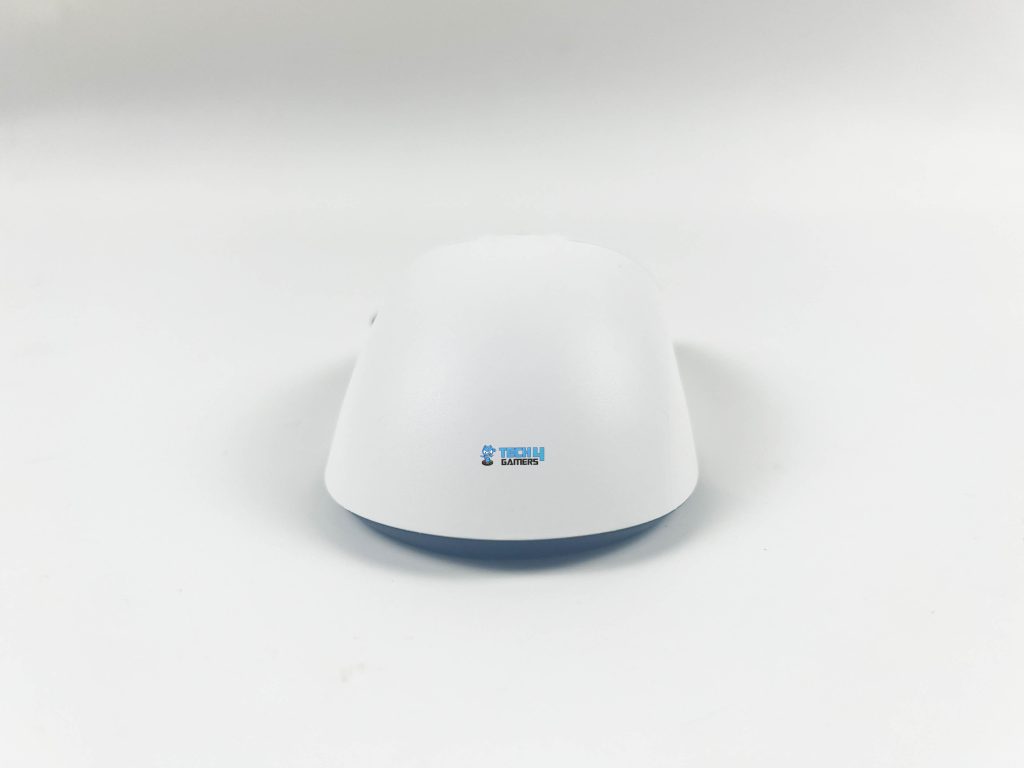
The Click Lite comes in at about 59 grams, which feels just right, not too heavy or not too light. On paper, that’s right in line with today’s ultra-light gaming mice. It’s technically lightweight but not so aggressively light that it feels hollow or flimsy. The balance is well distributed, which helps it feel stable when flicking or tracking, without the feeling of dragging extra bulk.
In hand, the plastic shell can initially give off the impression of being a bit too light. The good news is that once you start using it in-game, that perception fades quickly as the shape, sensor, and tracking performance prove themselves otherwise. Ultimately, it ends up in a comfortable middle ground, which is light enough to accommodate claw and fingertip grip styles, yet still grounded sufficiently.
Coating
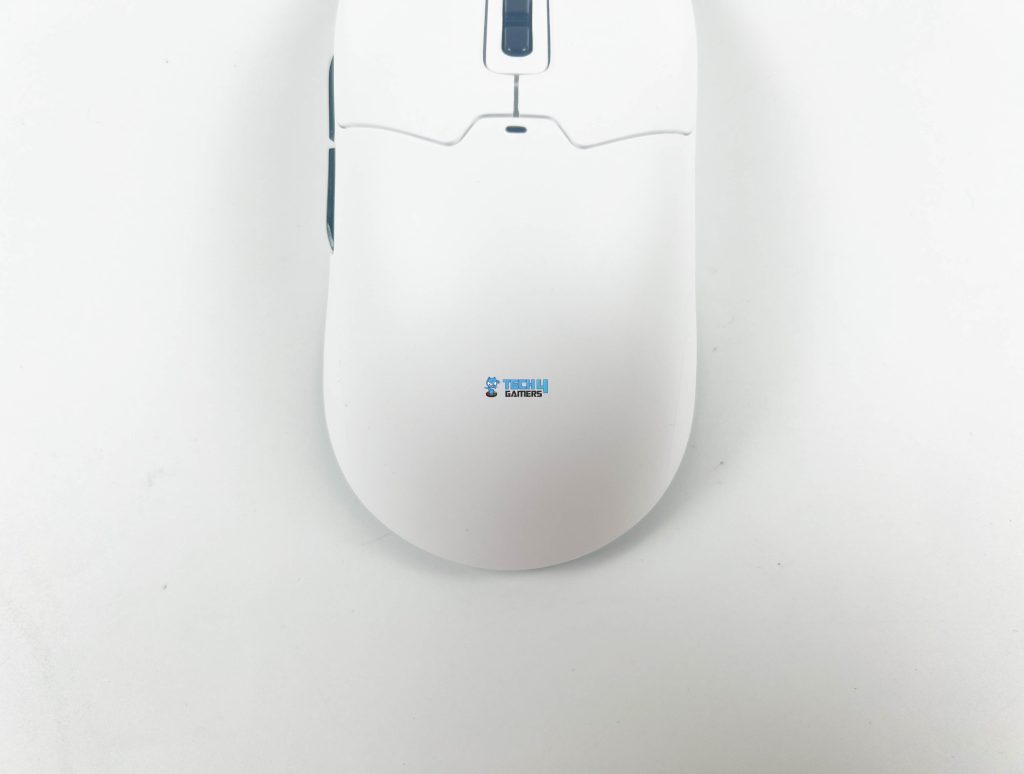
The Click Lite’s surface coating is simple, but it works really well in everyday use. It has a light texture that provides your fingers with some grip without requiring extra tape. With dry hands, it holds nicely and doesn’t pick up fingerprints too easily. Over longer sessions, the mouse stays comfortable without getting overly slick.
Epomaker also includes decals for customization, though these are more of an aesthetic addition than a functional one. As per my usage, the decals can change the look. However, they pick up dirt quickly and don’t significantly contribute to grip. For me, the coating on its own is enough, and I prefer leaving the mouse as it is.
Underside
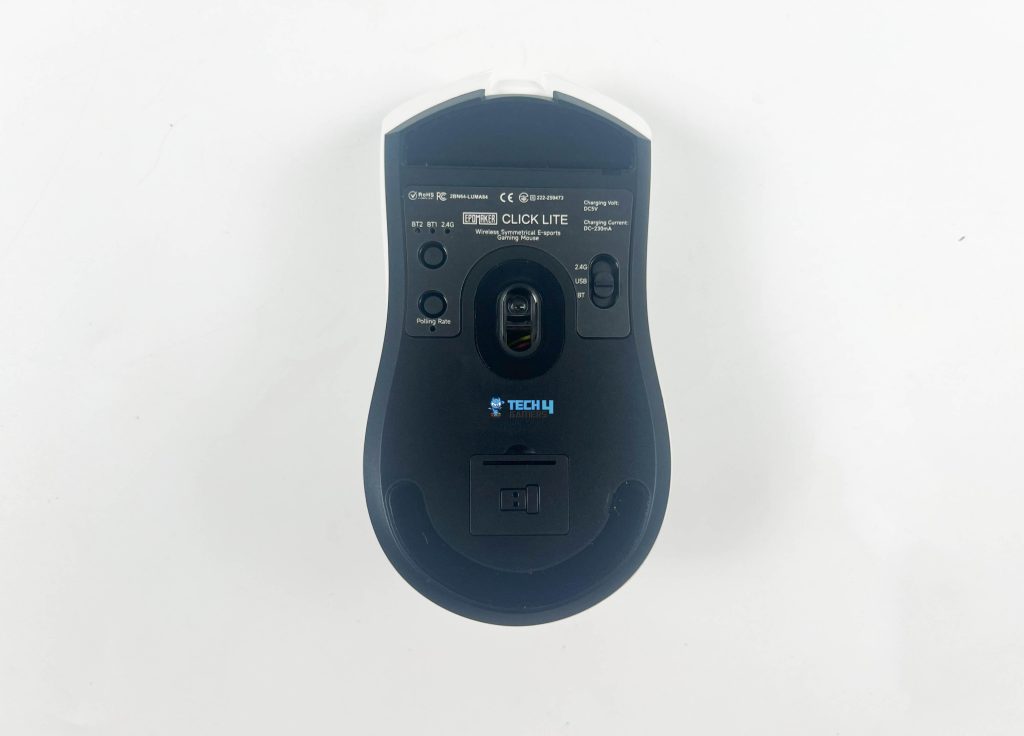
Flipping the Click Lite over, you’ll immediately notice its skates. At first, they look a bit basic. However, once you put the mouse on the pad, these skates glide far better than their appearance suggests. The edges are properly rounded, which prevents that scratchy, uneven drag some cheaper skates tend to produce. They provided a smooth, consistent glide that feels easy to control during micro-adjustments
The underside also provides Click Lite’s functional controls. You’ll find a 2.4G indicator, Bluetooth 1 and Bluetooth 2 indicators, a 2.4G connection button that doubles as a Bluetooth switching button, a dedicated polling rate switching button, the polling rate indicator itself, and a connection mode switch that lets you switch between 2.4G, wired, and Bluetooth modes. There’s even a slot for storing the 2.4G dongle.
Build Quality
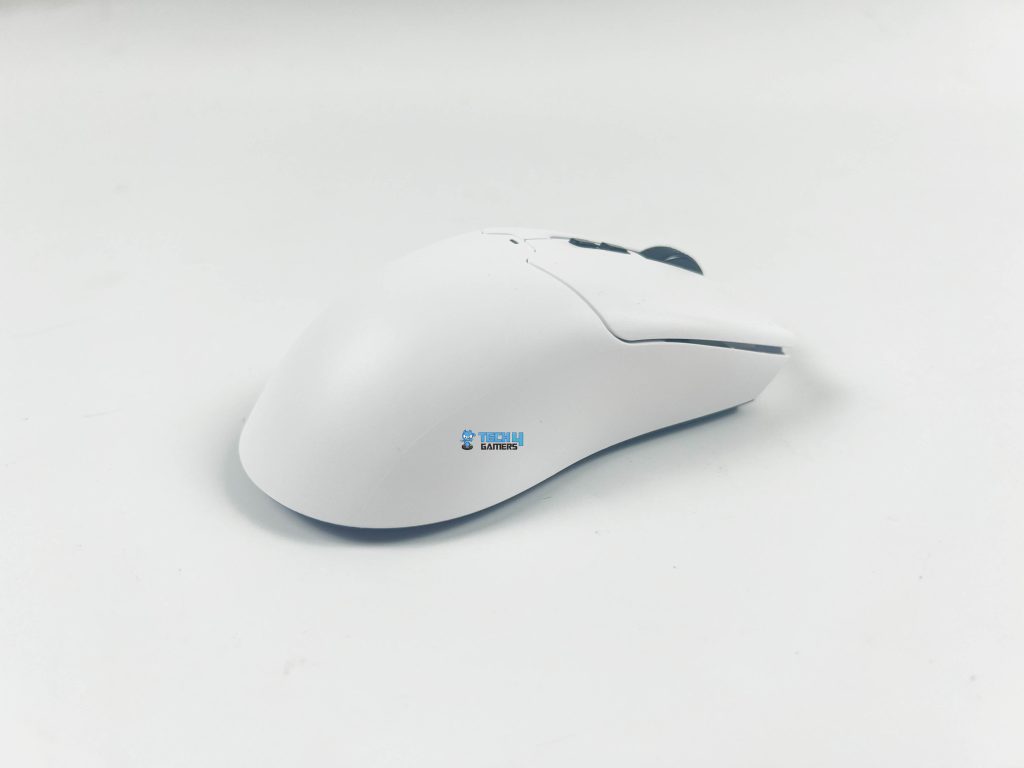
The Click Lite isn’t a tank like some Zowie mice, but it feels pretty solid. It doesn’t bend when pressure is applied, and there are no creaks either. It’s primarily plastic with a matte finish and feels solid enough for daily use, but don’t go tossing it around. The plastic shell provides a sense of protection for daily gaming and regular usage.
However, if you were to really abuse it during intense moments of rage, let’s say you drop it repeatedly or smash it against a desk. It won’t last for a long time. That said, for a mouse this light, it’s impressive how solid and rattle-free it feels in everyday use. The ABS plastic itself is relatively standard, but with regular handling, it should last for a long time without any significant wear and tear issues.
Primary Buttons
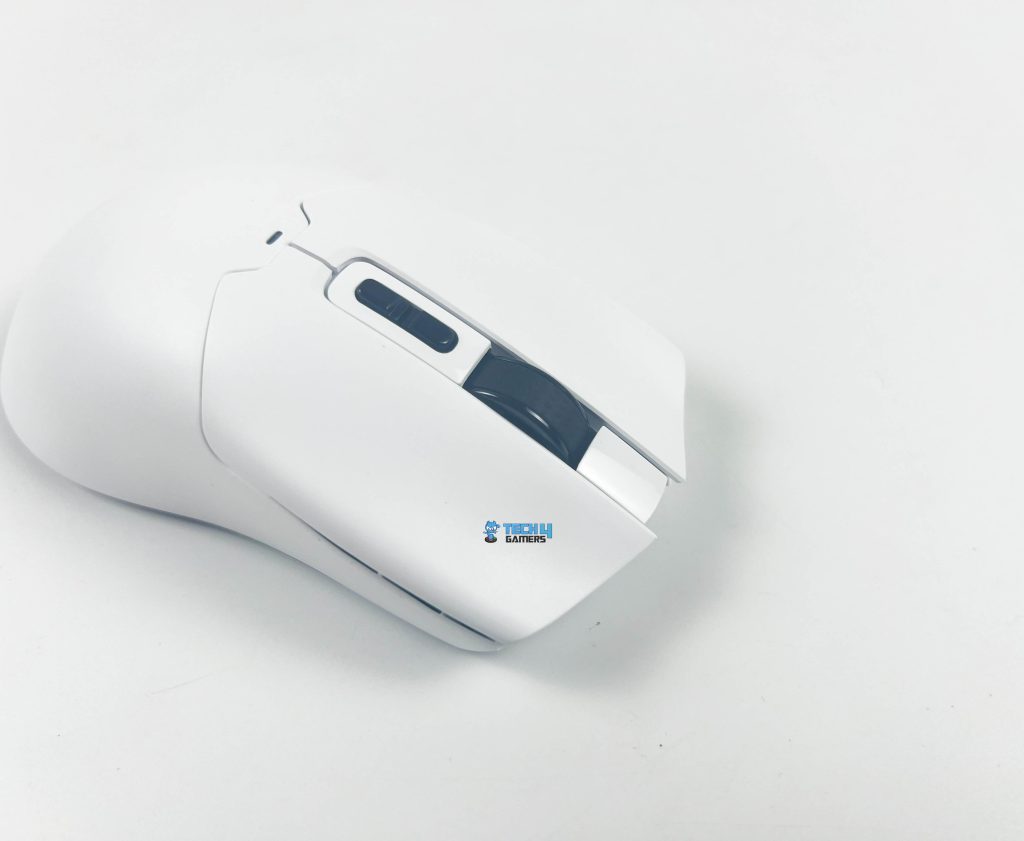
The primary buttons are crisp and provide consistent actuation. Each click feels snappy, with little to no pre-travel time, providing the immediate feedback you want in a competitive environment. The main left and right buttons are well-fitted into the frame, sitting perfectly without any gaps. They are slightly grooved, which helps the fingers naturally settle into place and adds to comfort during long sessions.
That said, there is a tiny bit of side play in the primary buttons. It’s a small thing and won’t really affect your experience, but if you tend to click near the edges of the buttons, you might notice a tiny bit of play. Most people probably won’t even realize it, but it’s a reminder that this isn’t a premium mouse shell. Lastly, there are two customizable DPI buttons on the front.
Side Buttons
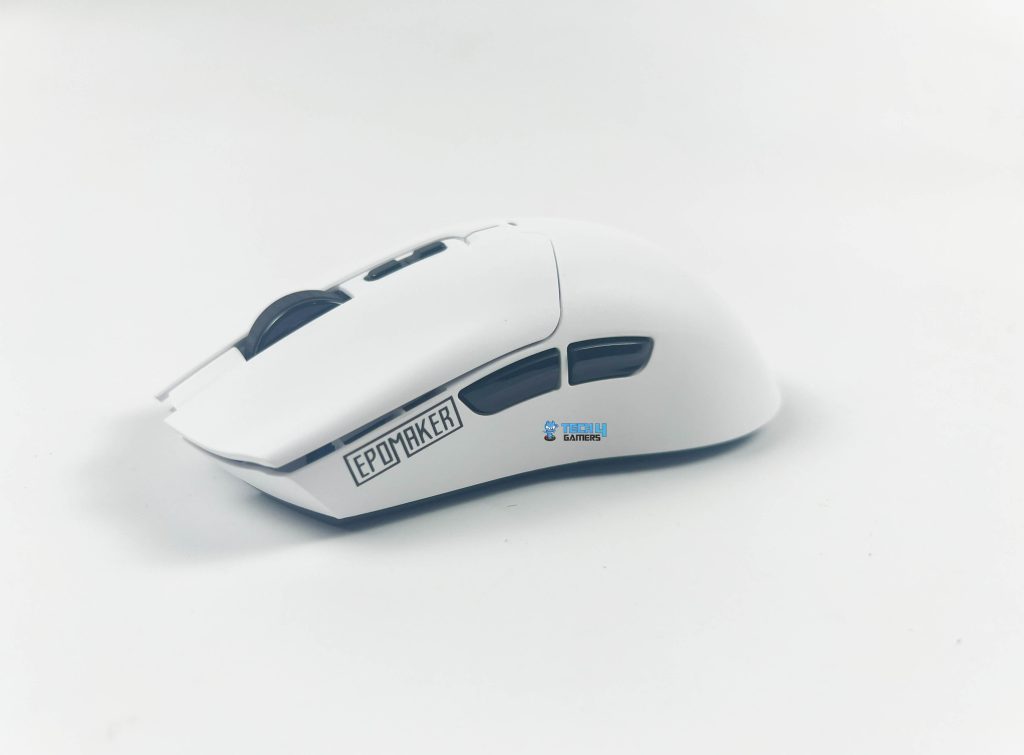
The side buttons on the Click Lite are positioned thoughtfully at a natural resting point for the thumb so that you don’t need to adjust your grip or stretch to reach them uncomfortably. They’re slim but not overly small, so you won’t accidentally miss them mid-game. As per actual usage, they lean slightly towards the softer side in terms of feedback.
You don’t get the sharp, snappy click of the main buttons, but the travel is short enough that they still feel responsive. They’re perfectly functional for quick melee actions or binding utility keys in shooters. They also sit close to the shell, which keeps them from being pressed accidentally, though some might wish for a touch that would be more defined for faster actuation by feel alone.
Scroll Wheel
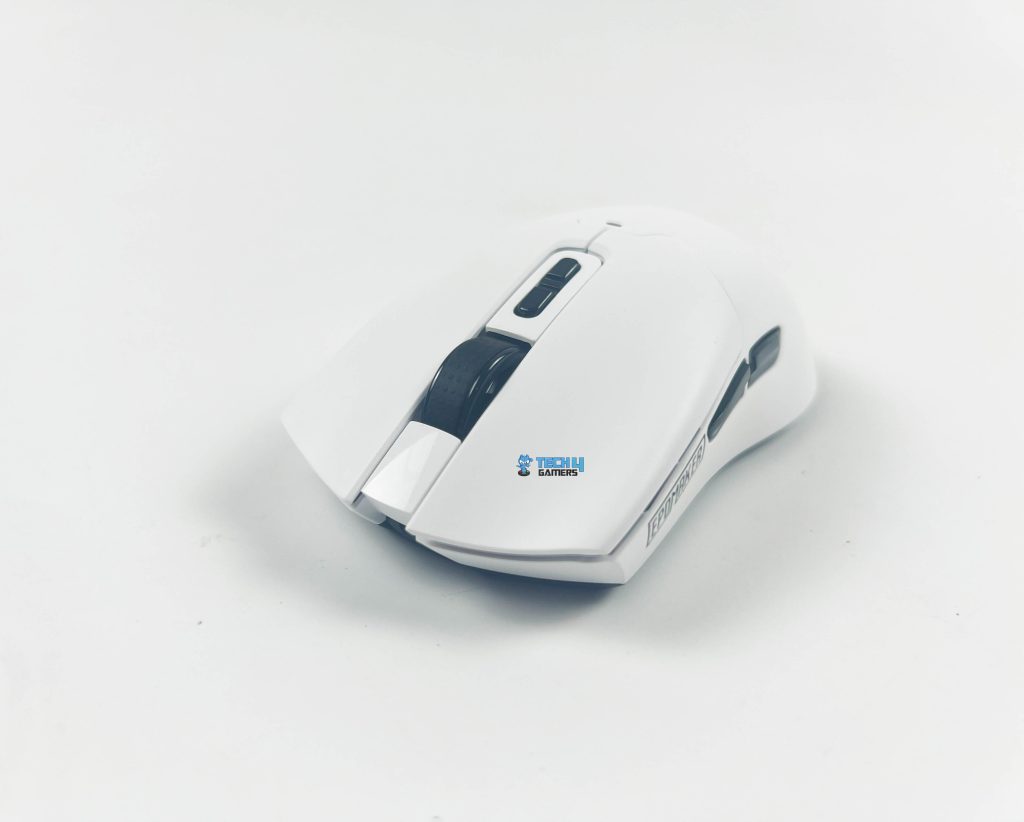
The scroll wheel is rubbery. I didn’t notice any slipping, even when my fingers were a little dry. It moves rapidly, and you can feel each step. It’s firm enough to give precise control when cycling through weapons in games, but still easy to use for regular browsing. The middle-click itself has moderate resistance, neither too heavy to press nor too light.
That makes it less fatiguing if you’re someone who constantly uses middle-click to ping in games. That said, the scroll wheel feels a bit stiff when you’re scrolling fast or doing a lot of repeated actions. I noticed it especially in games where I had to scroll a lot. Still, it’s not a big problem. The rubber surface keeps my fingers from slipping, and I can feel each notch clearly, without it feeling scratchy.
Battery Life
The Click Lite comes with only a 500mAh battery, but it holds up surprisingly well. Under mixed usage, you’re looking at anywhere around 70 to 80 hours on a single charge, depending on how you use it. That translates to around five to six days atleast of heavy gaming, like 12 hours if you’re using it at the max 1K polling rate, which is precisely what most competitive players would do.
Dropping the polling down to 500, 250, or even 125Hz for regular use, and you’ll squeeze out even more, closer to a whole week or beyond. It also features an auto-sleep function that activates when the mouse remains idle for a few minutes, and it’ll smartly power itself down. Lastly, it supports wired use while charging, allowing you to plug in the USB-C cable and continue.
Connectivity
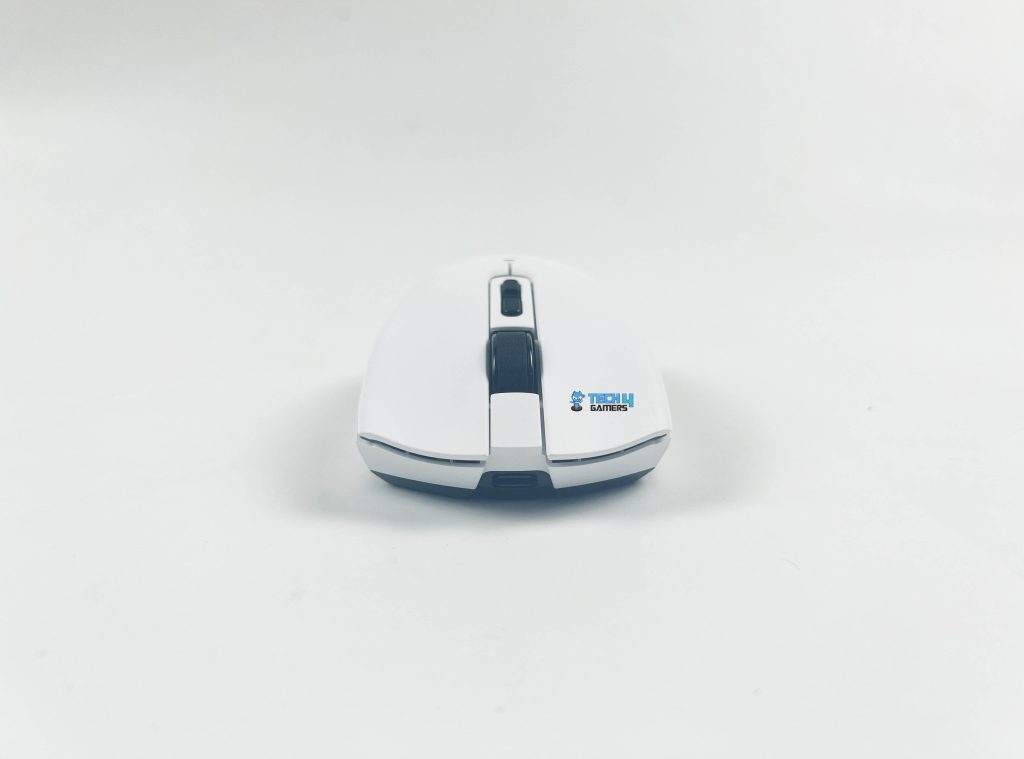
The Epomaker Click Lite connects in three ways: 2.4GHz wireless, Bluetooth, or wired with USB-C. I mostly used the 2.4GHz mode for gaming, as it felt extremely responsive and smooth. If you plug it in with the USB-C cable, there’s basically zero delay. It is a much better choice for longer sessions since you never have to worry about the battery.
Bluetooth is mainly for convenience, though I wouldn’t use it for serious gaming. I tried it with my laptop for browsing and daily tasks, and it worked without any significant lag. Changing between modes is simple using the switch on the bottom, and there’s also a button nearby to change polling rates quickly without opening the software.
Software
Epomaker accompanies the Click Lite with its HUB software, which is the same ecosystem it uses for most of its peripherals. It allows you to perform the usual tasks, such as setting up macros, changing button functions, adjusting polling rates, and fine-tuning DPI. You can also update the firmware from there. The DPI goes from 800 all the way to 24,000 in 50-step increments, which is more than enough for most users.
It works fine overall, but the software isn’t super smooth. Some parts feel a little clunky to navigate and feel a bit awkward. For example, you can’t change what the DPI buttons on the mouse do. That said, Epomaker is still relatively new to the mouse space, and HUB shows potential. The essential settings are already there. But for now, it feels more like an early draft.
Performance
The Click Lite uses the PixArt PAW3311 sensor, and it tracks really well. I didn’t notice any skipping or weird spinouts while gaming or just moving around the desktop. It’s not the top-of-the-line sensor like PAW3395 or PAW3950, but for a mid-range mouse, it handles everything I throw at it without issues. The lift-off distance is decent, too, though sometimes it can feel a tiny bit inconsistent if you pick the mouse up really quickly.
In FPS titles like Valorant and CS2, the mouse provides reliable single-target tracking, with flicks feeling quick and natural. Fast firefights requiring multiple target transitions were also satisfying. However, claw-style grippers may feel slightly less comfortable compared to those used by fingertip users. Lastly, the response time is on par with that of bigger names in the industry, and in testing, it didn’t feel out of place in comparison.
Should You Buy It or Not?
Buy it if
✅ You want lightweight comfort: At just around 59g, the Epomaker Click Lite feels feather-light in hand, making it perfect for long work or gaming sessions without fatigue.
✅ You need tri-mode connectivity: With Bluetooth 5.0, 2.4GHz wireless, and wired USB-C options, this mouse provides seamless switching between devices.
✅ You’re looking for great value: Despite being a budget-friendly option, the Click Lite offers features often found in more expensive mice.
Don’t buy it if
❌ You want a high-end sensor: The PAW3311 sensor gets the job done for casual gaming and everyday use, but if you’re into competitive esports, its performance won’t match flagship sensors.
❌ You expect premium build quality: While lightweight, the shell does feel plasticky compared to premium gaming mice. If you prefer a sturdier, more high-end finish, this may leave you underwhelmed.
❌ You prefer larger mice: The Click Lite’s compact size may feel too small for people with larger hands, especially if you prefer a palm grip over claw or fingertip styles.
My thoughts
Coming from a company that’s mainly known for its keyboards, I wasn’t expecting much from them, but it’s clear they’ve done their homework. They already proved me wrong once with the original Click mouse, and now they’ve managed to do it again with the Lite version as well. The shape and weight balance are the real standouts here, making it feel snappy and controlled in-game without trying too hard to mimic the usual big-brand models.
Build quality is an area where you might raise an eyebrow. At first touch, it feels a bit plasticky compared to high-end options, but once you start gaming, the performance quickly outweighs that initial impression. And that’s really the point here. At just $29.99, it provides value way above its price. For budget gamers, claw or fingertip grip users, the Click Lite is an easy recommendation to purchase without spending a fortune.
Thank you! Please share your positive feedback. 🔋
How could we improve this post? Please Help us. 😔
[Hardware Reviewer]
After many years of exploiting various pieces of hardware, Abdul Hannan now serves as an editor at Tech4Gamers. He’s been in the PC hardware reviewing industry for almost a decade, and his staff of passionate geeks and reviewers is second to none.
Abdul Hannan is constantly seeking new methods, you will always see him running into New Computer Courses to improve the performance of his computer components since he is an ardent overclocker. He is well-known for providing the most extensive and unbiased analysis of the newest and greatest hardware for PC gaming, including everything from GPUs to PSUs.


 Threads
Threads
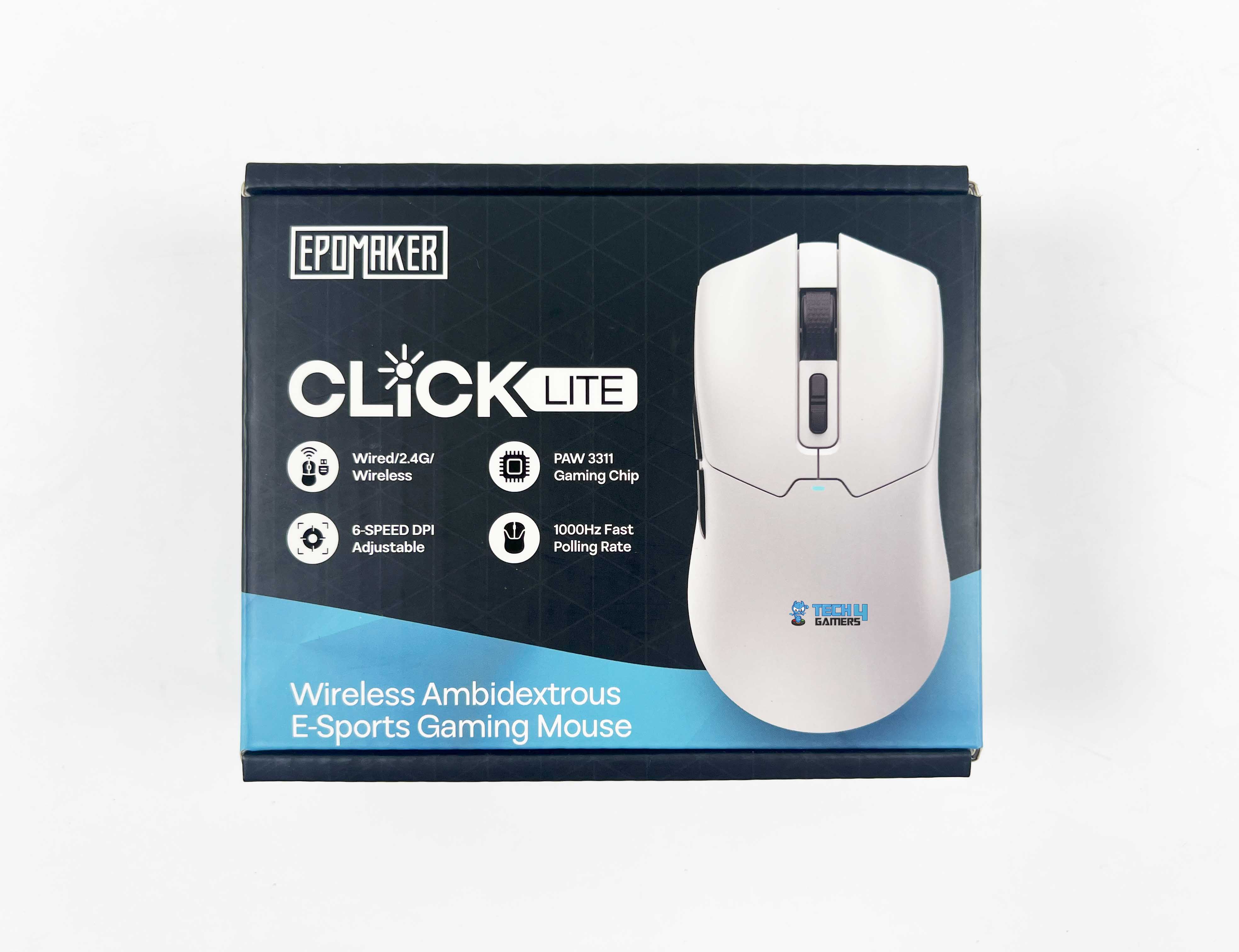

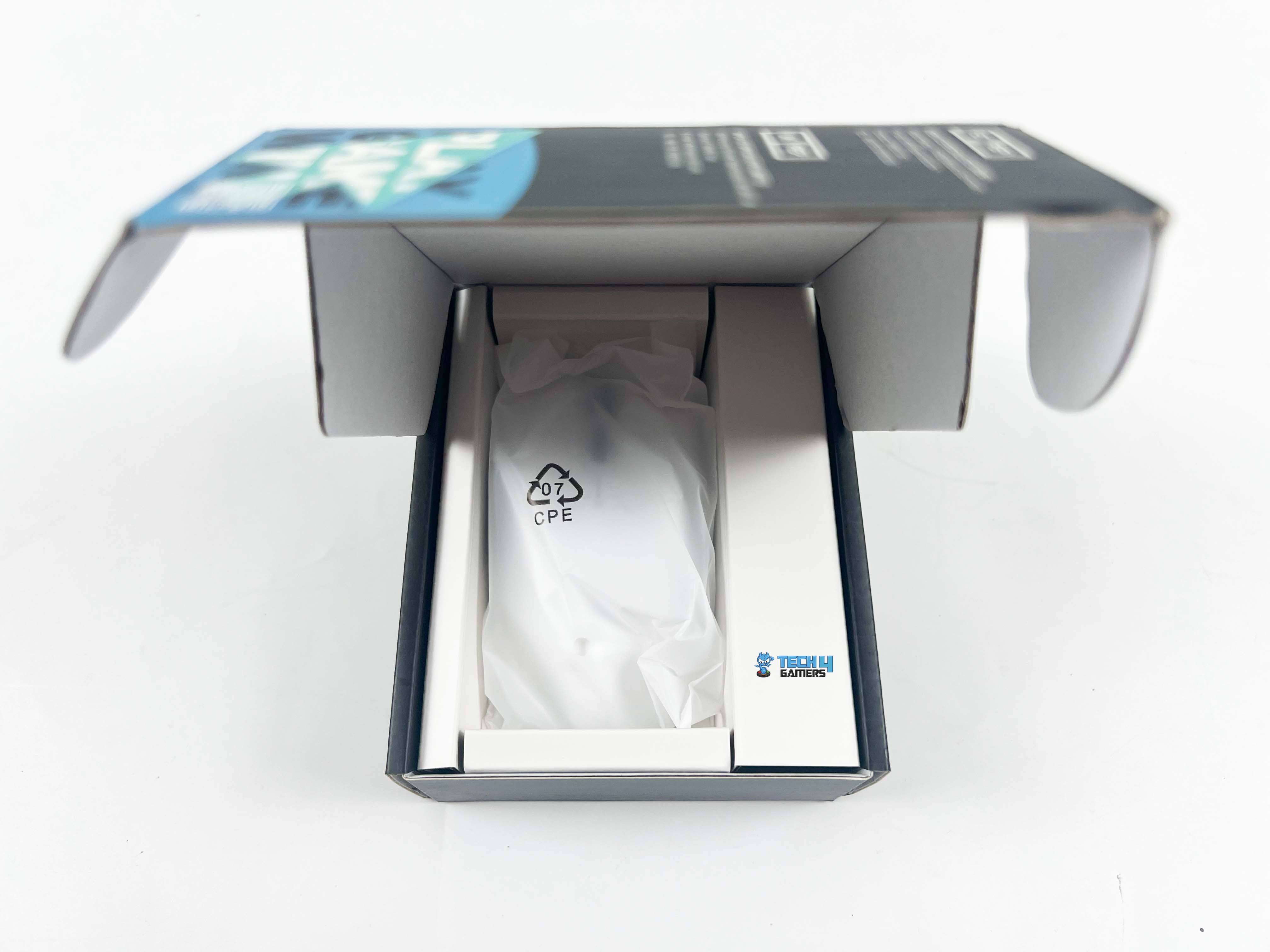
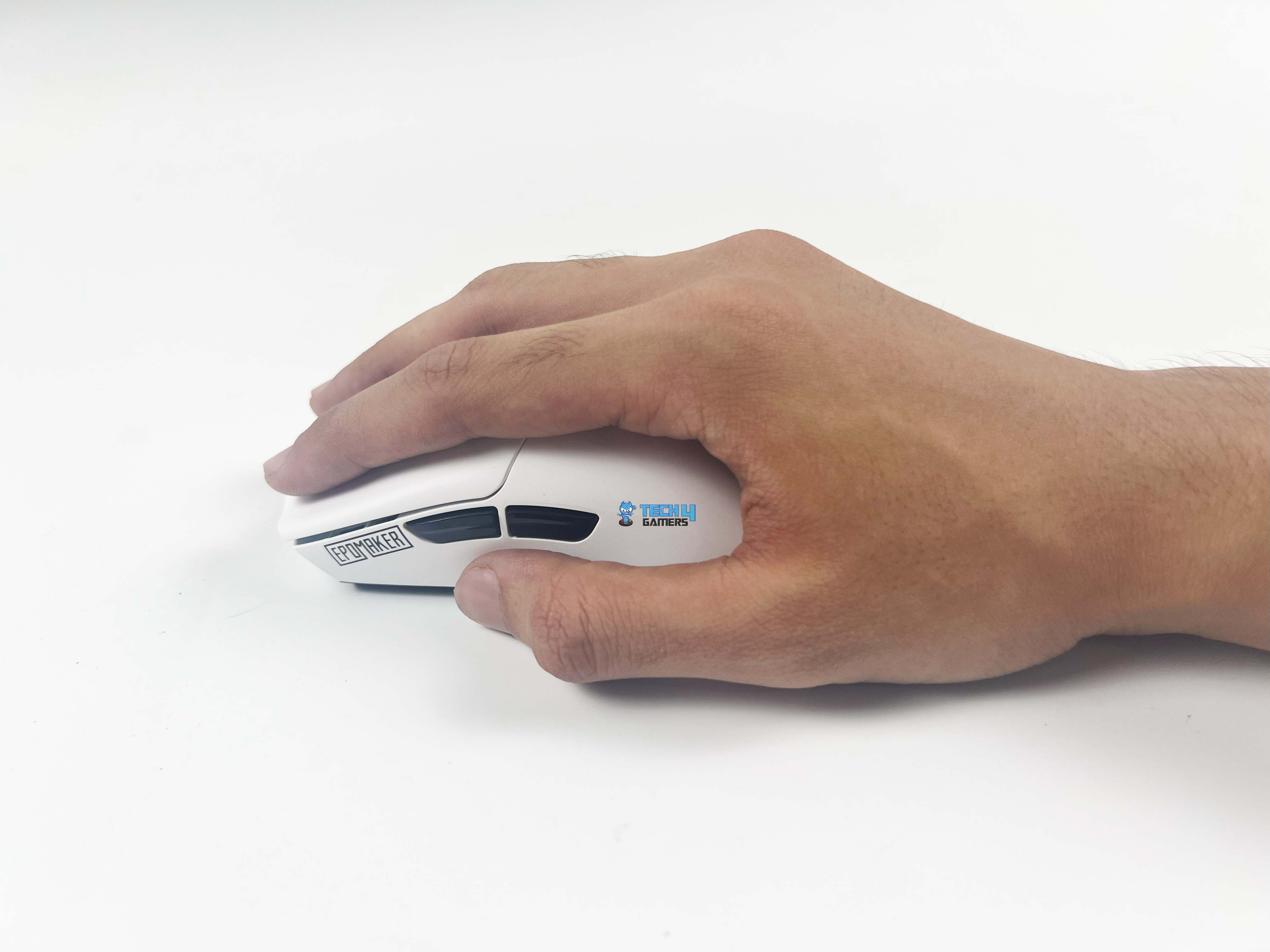
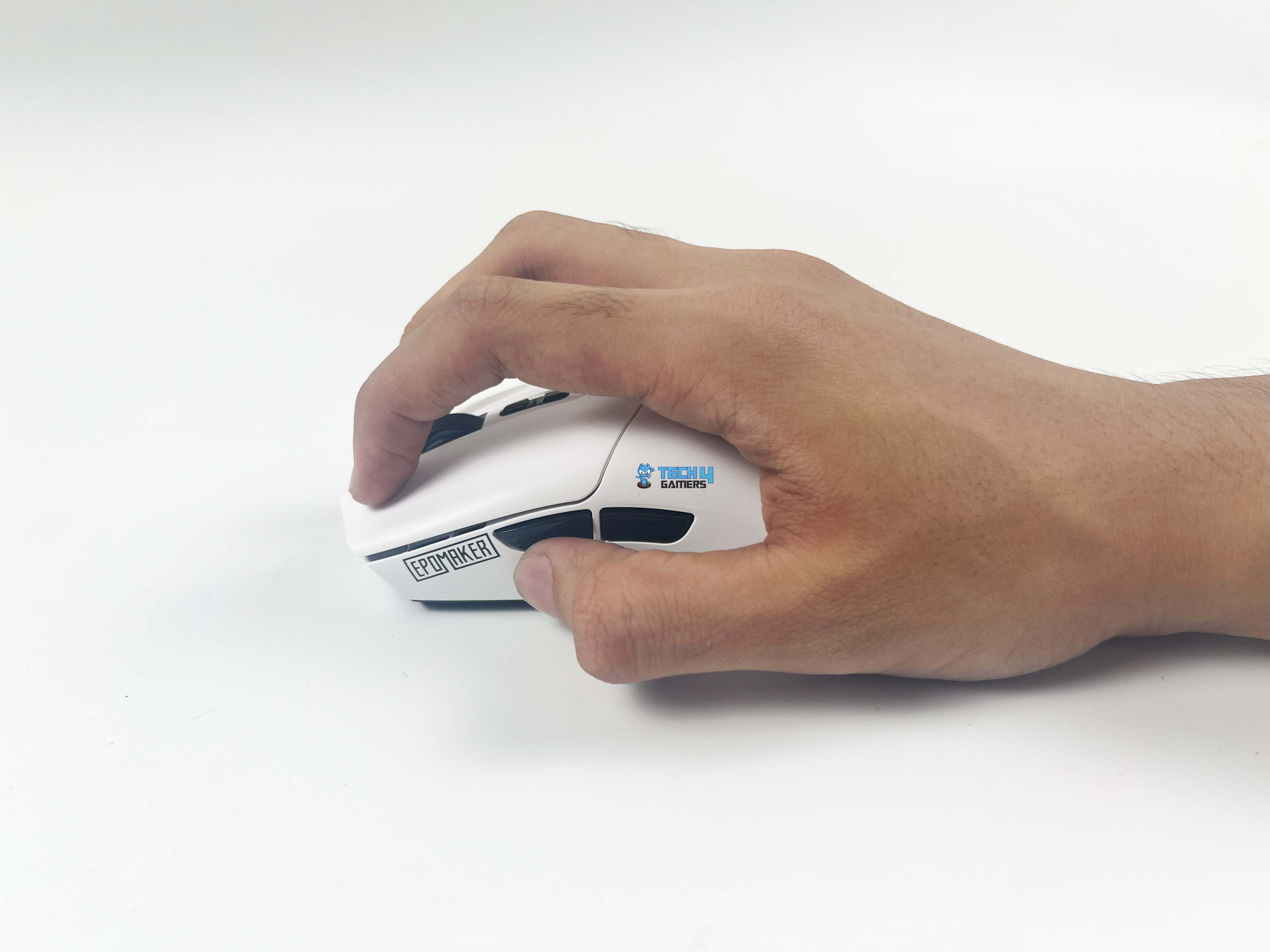
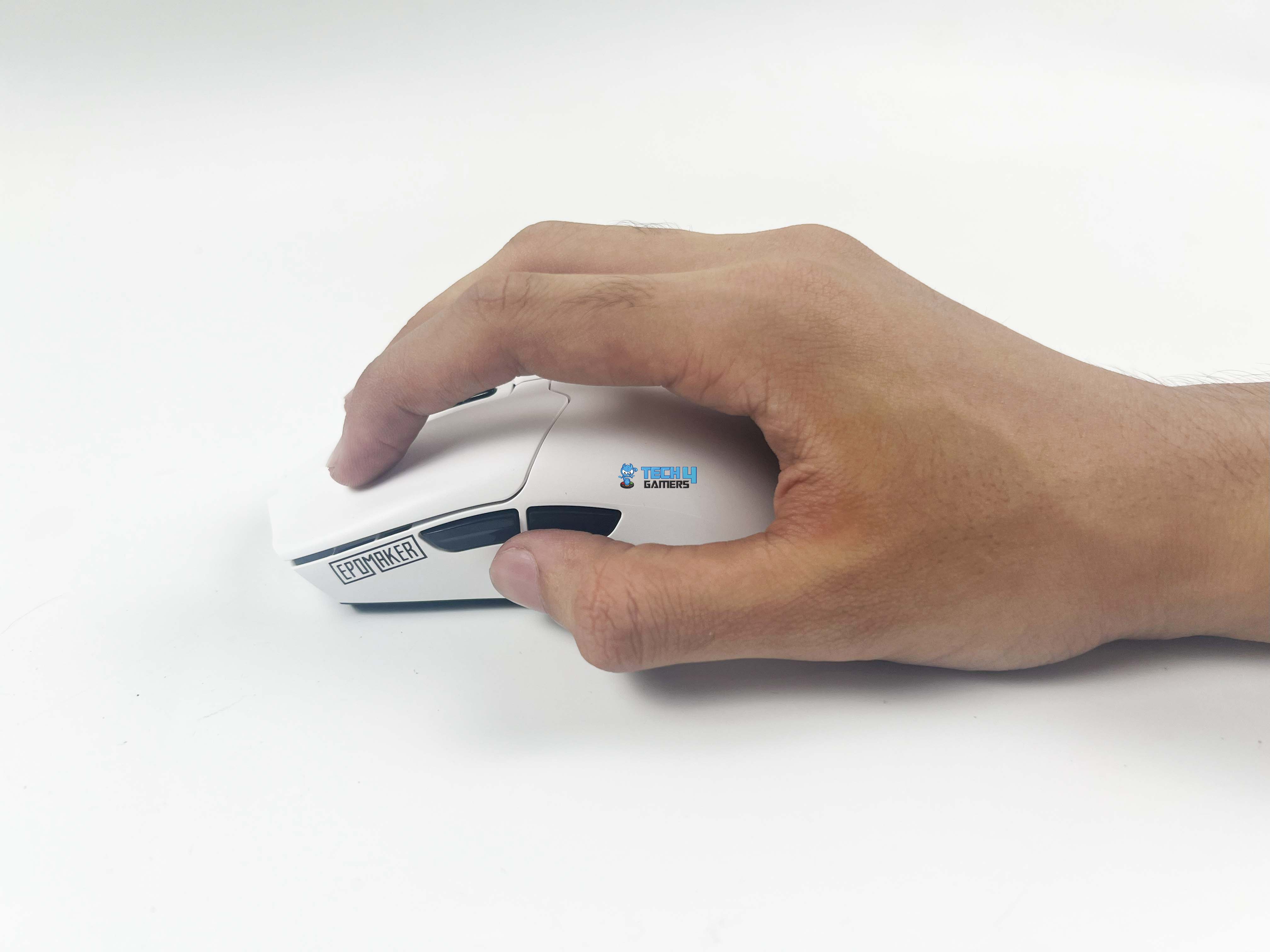
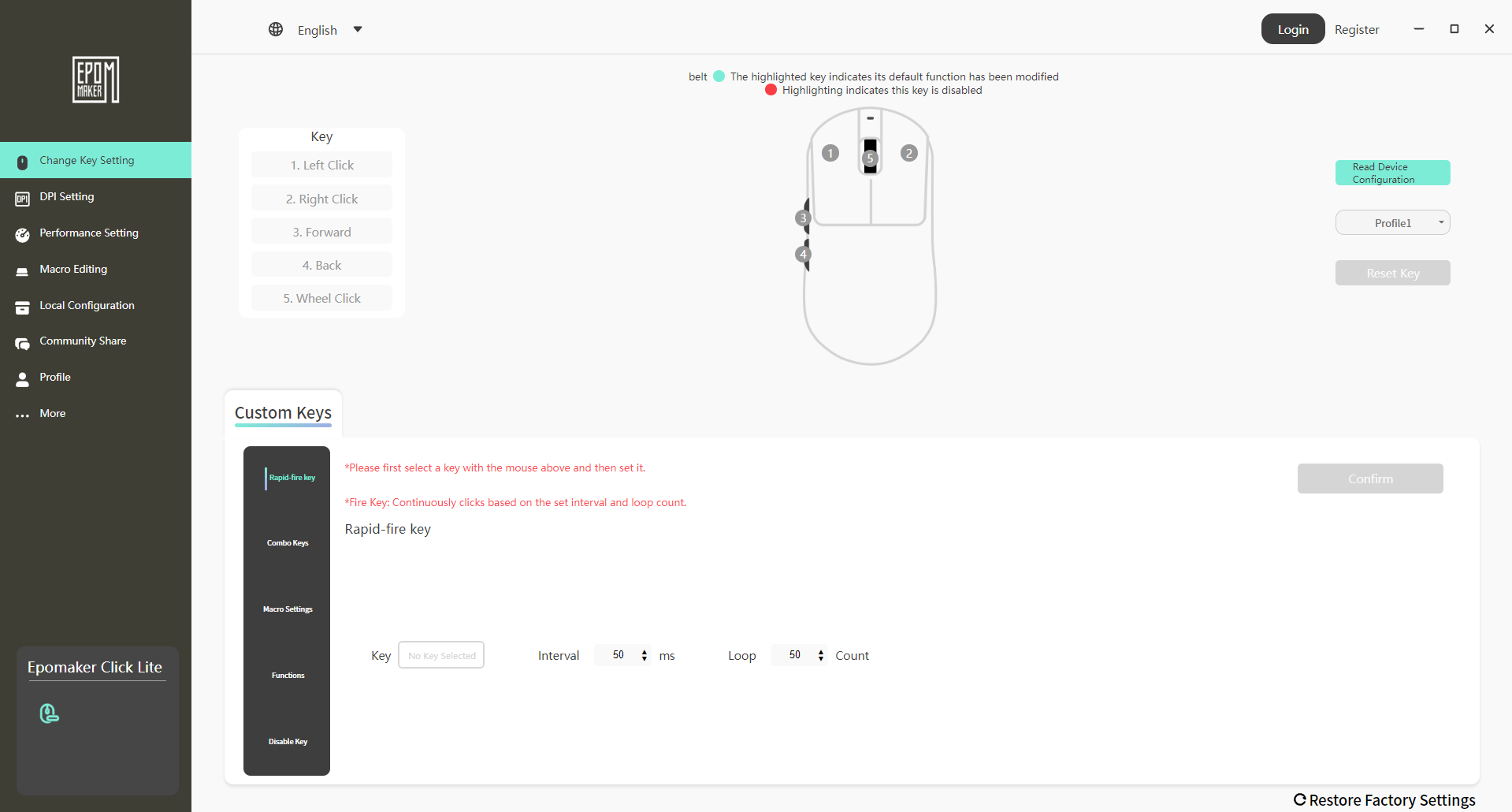
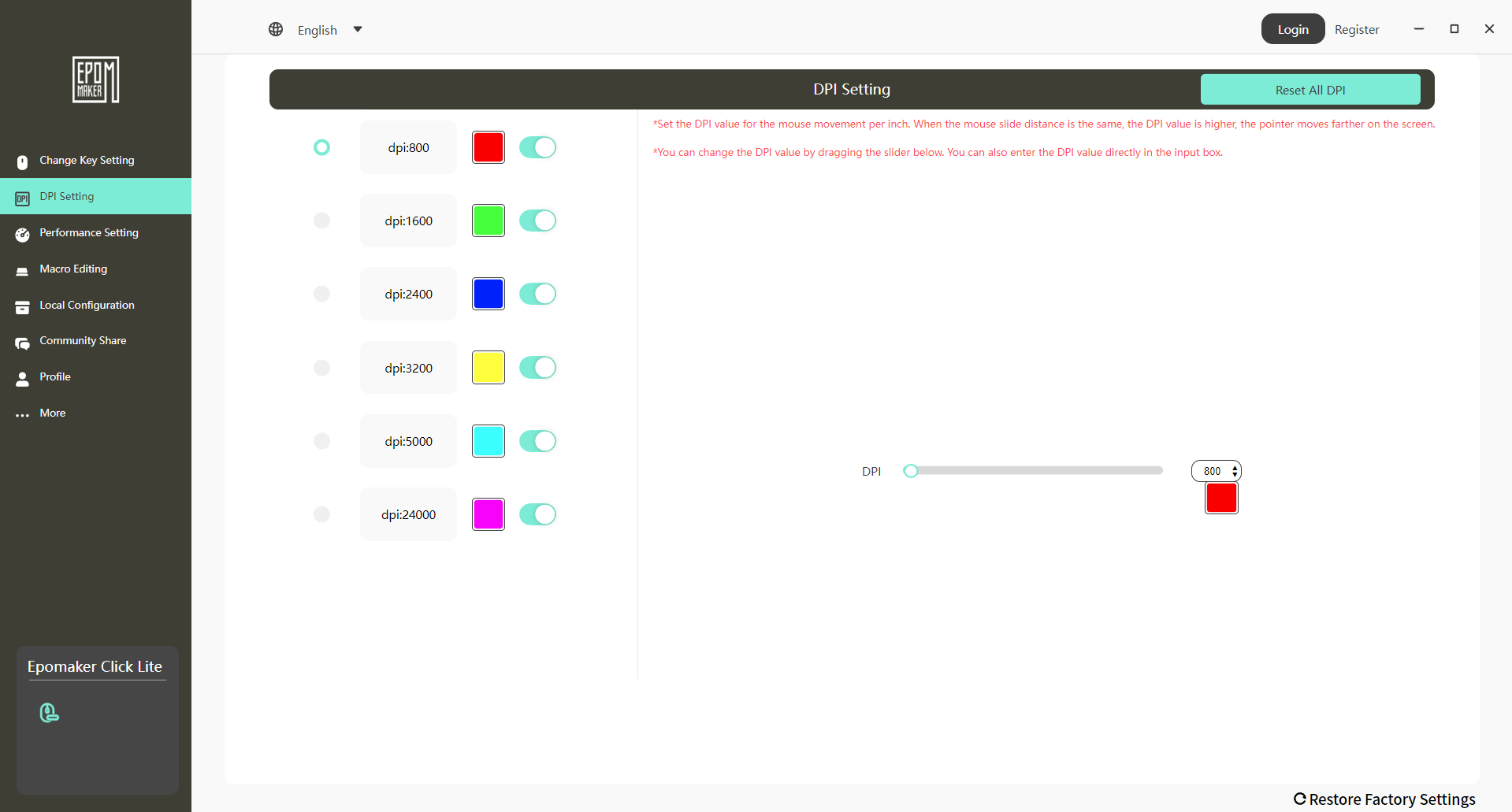
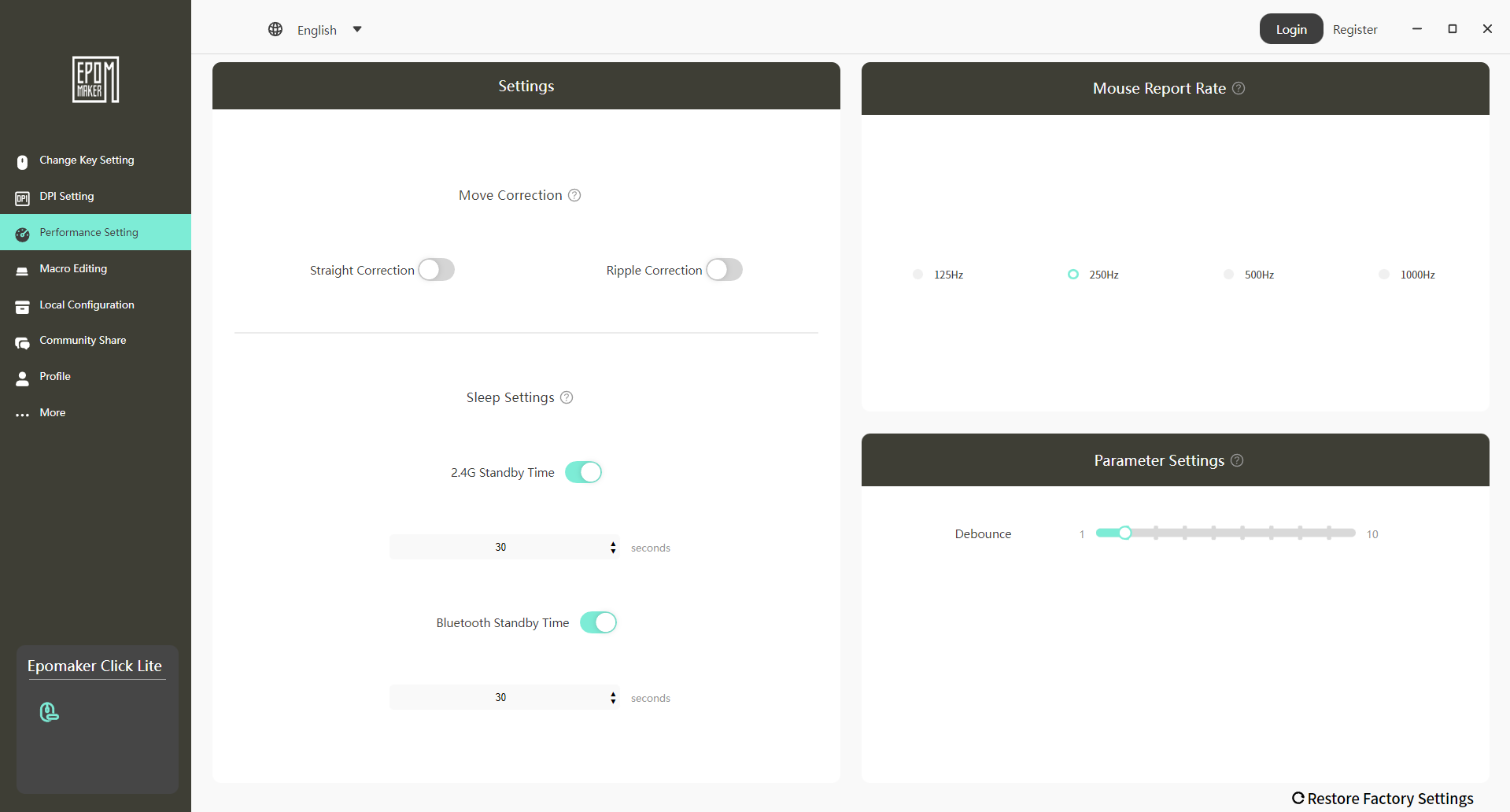
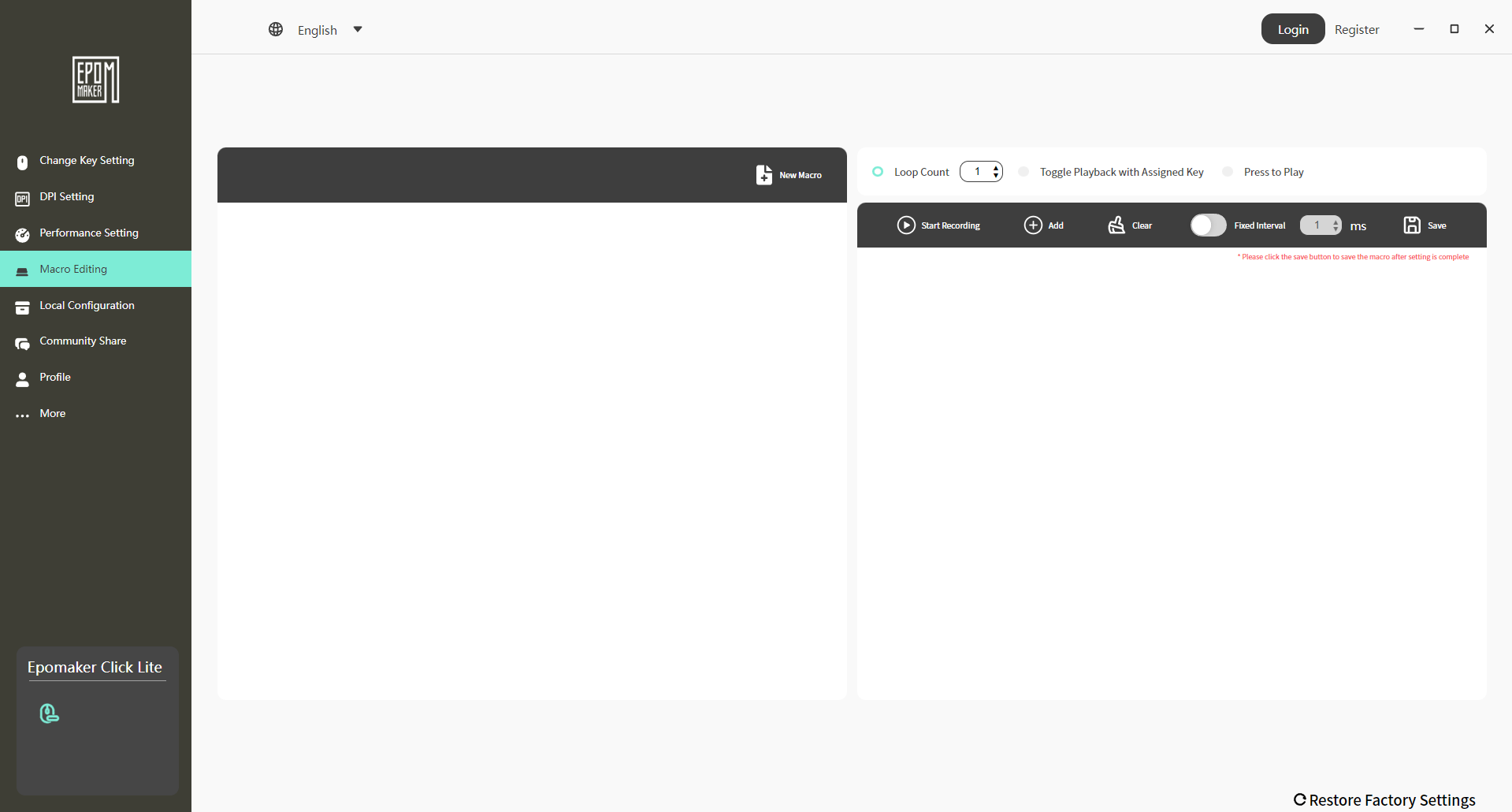
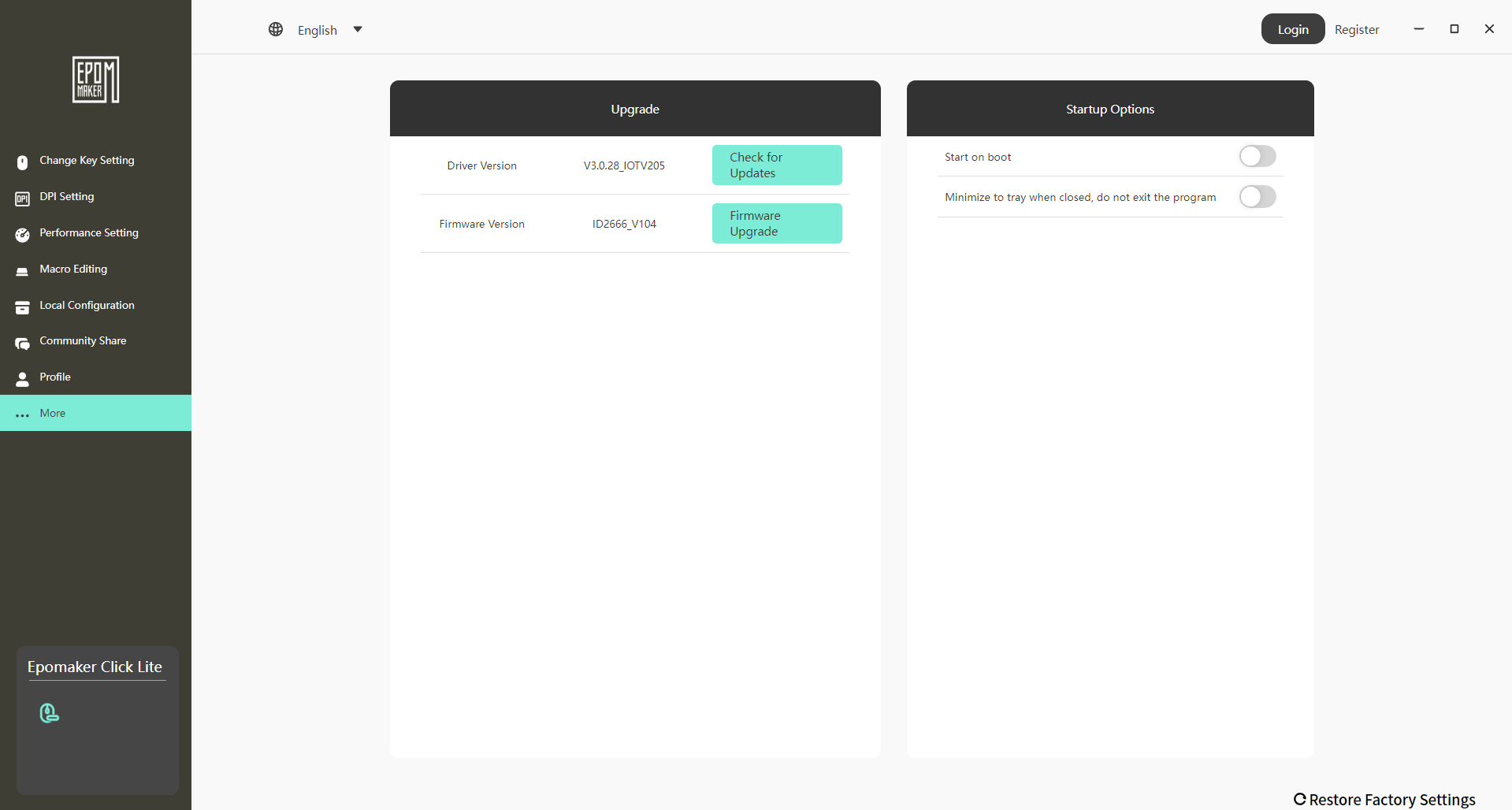
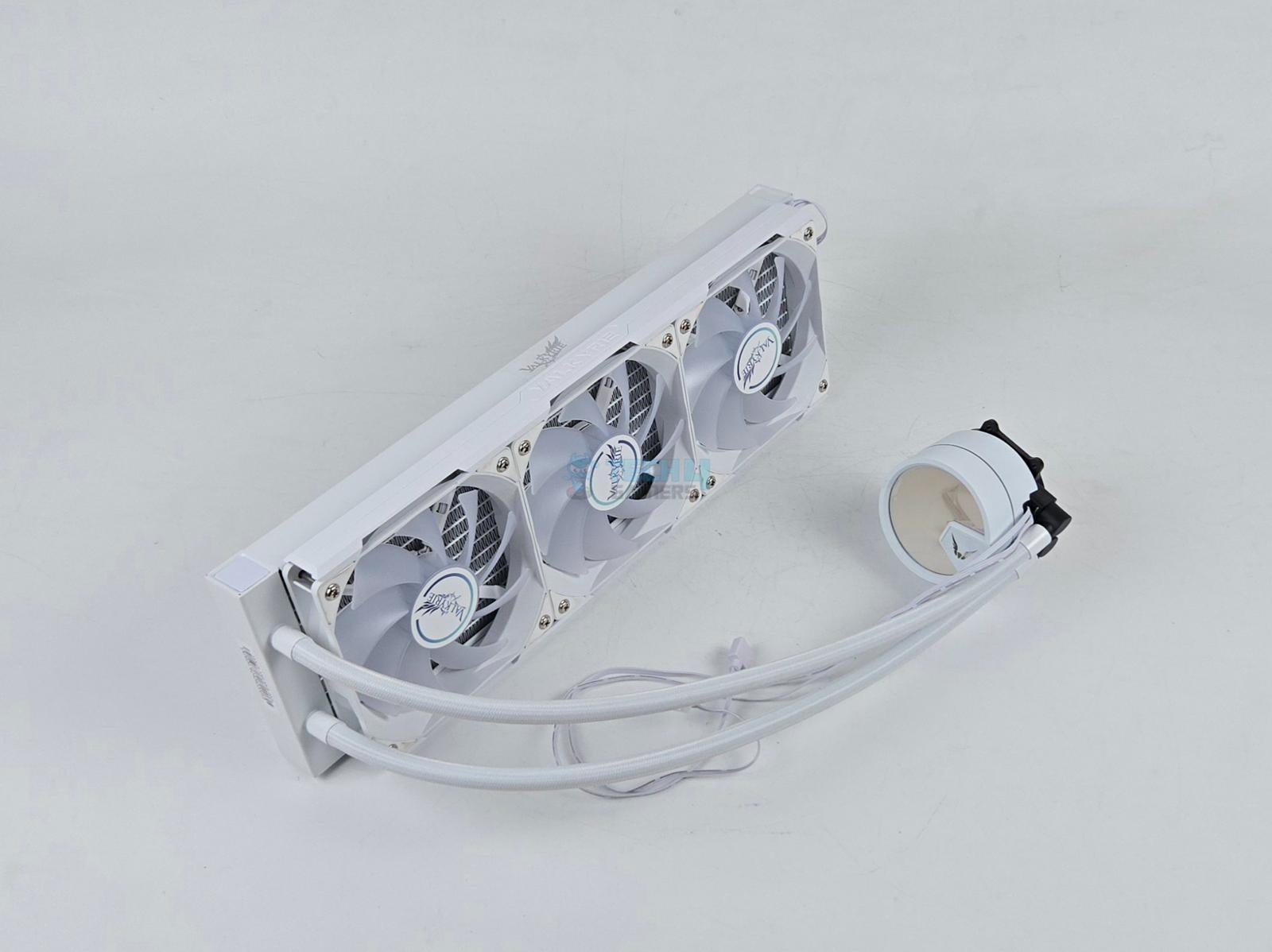

![The 6 BEST Mouse For VALORANT [Hands-On-Tested] Best Valorant Mouse](https://tech4gamers.com/wp-content/uploads/2021/12/best-valorant-mouse-218x150.jpg)

